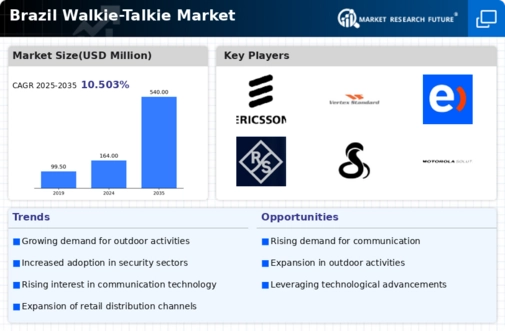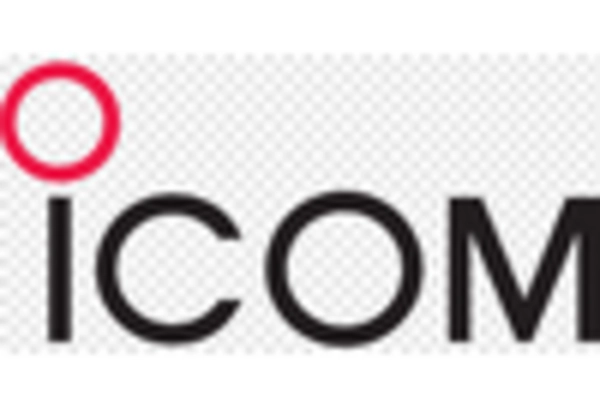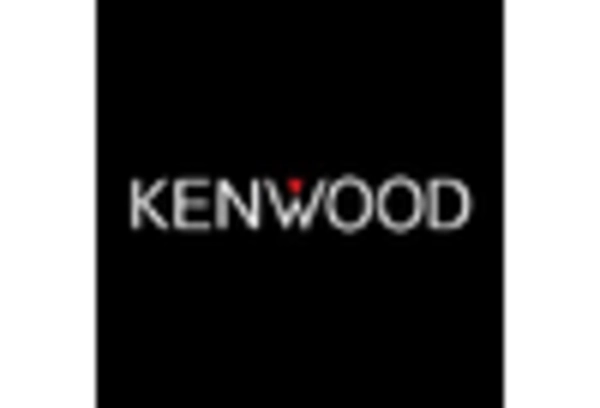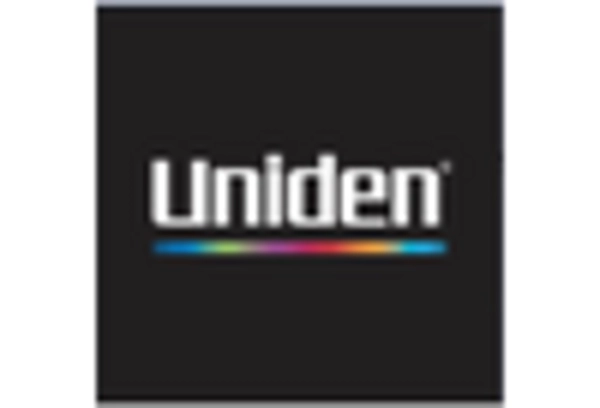Expansion of Construction Activities
The construction sector in Brazil is undergoing significant expansion, which directly influences the walkie talkie market. With numerous large-scale projects underway, including infrastructure development and urbanization initiatives, the need for efficient communication among workers on-site becomes paramount. Walkie talkies facilitate seamless communication, ensuring that teams can coordinate effectively, thereby enhancing productivity and safety. Market analysis suggests that the construction industry contributes around 25% to the overall demand for walkie talkies. As construction activities continue to rise, the walkie talkie market is poised for growth, driven by the increasing need for reliable communication solutions in this sector.
Growing Adoption in Emergency Services
The walkie talkie market in Brazil experiences a notable boost due to the increasing adoption of these devices in emergency services. Organizations such as fire departments, police, and medical response teams rely heavily on walkie talkies for real-time communication during critical situations. This reliance is underscored by the need for reliable and immediate communication, which walkie talkies provide. The market data indicates that the demand from emergency services accounts for approximately 30% of the total market share. As Brazil continues to enhance its emergency response capabilities, the walkie talkie market is likely to see sustained growth, driven by the necessity for effective communication tools in high-stakes environments.
Increased Focus on Safety and Security
The heightened focus on safety and security in various sectors is significantly impacting the walkie talkie market in Brazil. Businesses and organizations are increasingly prioritizing effective communication as a means to enhance safety protocols. This trend is particularly evident in sectors such as hospitality, security services, and event management, where walkie talkies are essential for coordinating activities and ensuring the safety of personnel and guests. Market data suggests that the safety and security sector contributes approximately 20% to the overall demand for walkie talkies. As the emphasis on safety continues to grow, the walkie talkie market is expected to expand, driven by the need for reliable communication solutions.
Rising Popularity in Recreational Activities
The walkie talkie market in Brazil is witnessing a surge in demand due to the rising popularity of recreational activities such as hiking, camping, and outdoor sports. As more individuals and families engage in these activities, the need for reliable communication devices becomes evident. Walkie talkies offer a practical solution for maintaining contact in remote areas where mobile signals may be weak or nonexistent. This trend is reflected in market data, which indicates that the recreational sector accounts for approximately 15% of the total walkie talkie market. The growing interest in outdoor adventures suggests that this segment will continue to expand, further bolstering the walkie talkie market.
Technological Integration with Smart Devices
The integration of walkie talkies with smart devices is emerging as a key driver in the walkie talkie market. In Brazil, manufacturers are increasingly developing walkie talkies that can connect with smartphones and other smart devices, enhancing their functionality. This technological advancement allows users to access additional features such as GPS tracking and messaging capabilities, making walkie talkies more appealing to a broader audience. Market trends indicate that this integration could potentially increase the market size by 20% over the next few years, as consumers seek multifunctional communication tools. The walkie talkie market is likely to benefit from this trend as it aligns with the growing demand for innovative technology.
















Leave a Comment